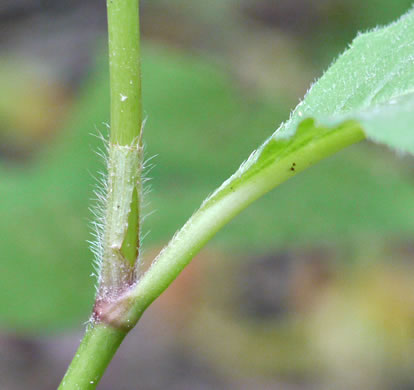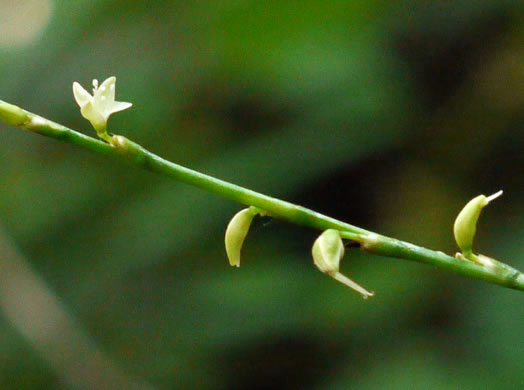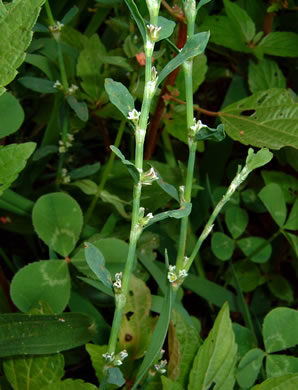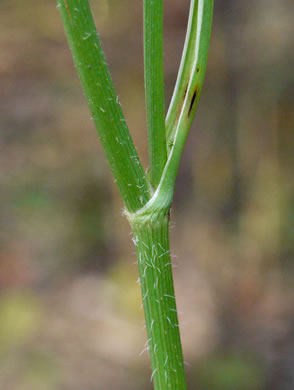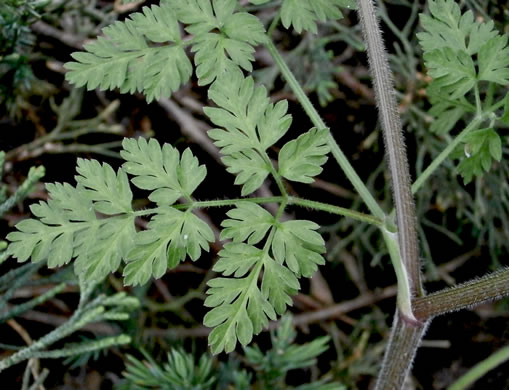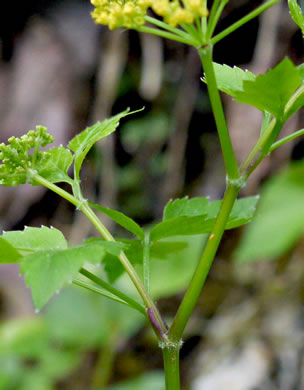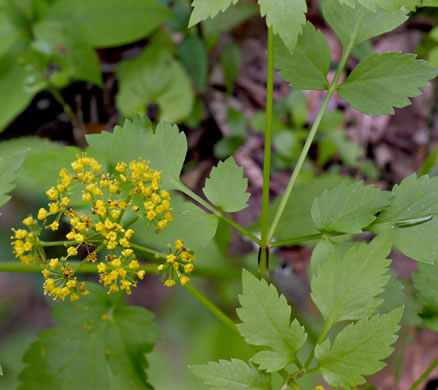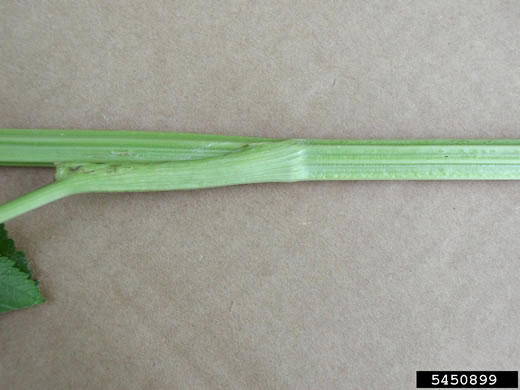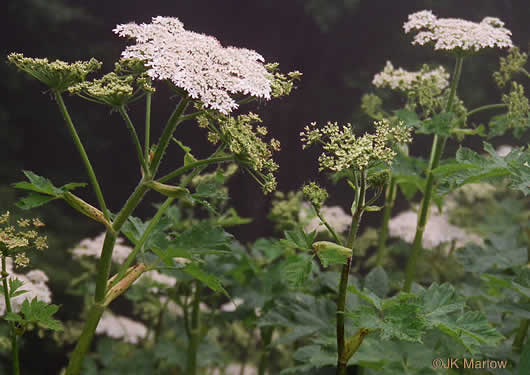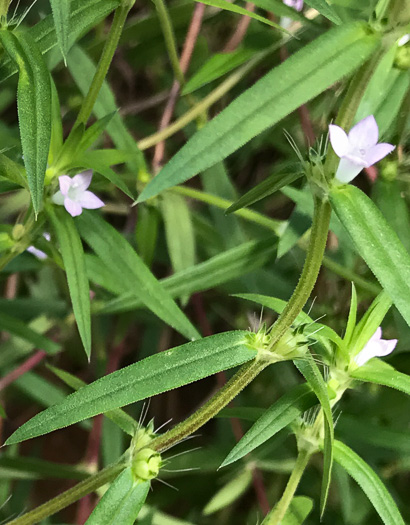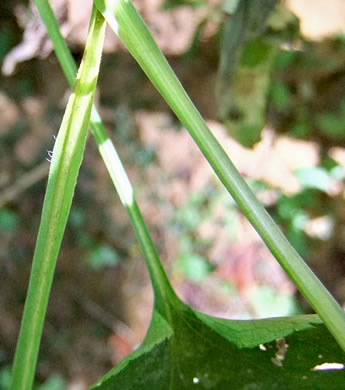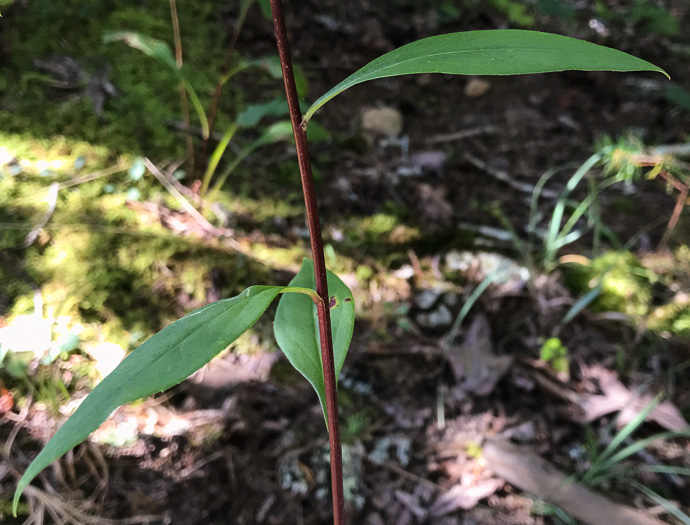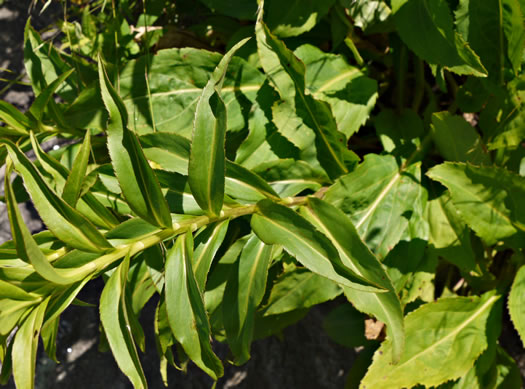Your search found 136 image(s) illustrating the term "sheath." For a written explanation, click on "sheath" in the Glossary.
To see larger pictures, click or hover over the thumbnails.
To go to the plant's detail page, click its name.
 Virginia Jumpseed,
Persicaria virginiana
Virginia Jumpseed,
Persicaria virginiana
The base of the leaf stalk forms a short sheath (ocrea) around the stem, per Wildflowers of Tennessee (Carman, 2005).
 Virginia Jumpseed,
Persicaria virginiana
Virginia Jumpseed,
Persicaria virginiana
4 tepals ~ 0.1" long, with base of each flower or its stalk in a sheath, per Wildflowers of Tennessee, the Ohio Valley, and the Southern Appalachians (Horn, Cathcart, Hemmerly, & Duhl, 2005).
 Prostrate Knotweed,
Polygonum aviculare ssp. aviculare
Prostrate Knotweed,
Polygonum aviculare ssp. aviculare
Sheaths [ocreae] silvery. Plant usually prostrate, sometimes erect, per Newcomb's Wildflower Guide (Newcomb, 1977).
 Queen Anne's Lace,
Daucus carota ssp. carota
Queen Anne's Lace,
Daucus carota ssp. carota
Leaf stalks in the Apiaceae usually have a broad sheathing base, per Wildflowers of Tennessee, the Ohio Valley, and the Southern Appalachians (Horn, Cathcart, Hemmerly, & Duhl, 2005).
 Southern Chervil,
Chaerophyllum tainturieri
Southern Chervil,
Chaerophyllum tainturieri
Petiole sheath ciliate, per Vascular Flora of the Carolinas (Radford, Ahles, & Bell, 1968).
 Hairy-jointed Meadow-parsnip,
Thaspium barbinode
Hairy-jointed Meadow-parsnip,
Thaspium barbinode
The hispid, purple-tinged leaf sheath is a useful additional [id] character for this species, per Weakley's Flora (2022).
 Hairy-jointed Meadow-parsnip,
Thaspium barbinode
Hairy-jointed Meadow-parsnip,
Thaspium barbinode
The hispid, purple-tinged leaf sheath is a good [field id] character, per Weakley's Flora (2012).
 American Lovage,
Ligusticum canadense
American Lovage,
Ligusticum canadense
The petioles have narrow basal sheaths, per Wildflowers of the Southern Mountains (Smith, 1998).
 Mountain Angelica,
Angelica triquinata
Mountain Angelica,
Angelica triquinata
Leaves reduced in size above: upper ones sometimes consist of only a sheath, per Wildflowers of the Southern Mountains (Smith, 1998).
 Parsnip,
Pastinaca sativa
Parsnip,
Pastinaca sativa
In the family Apiaceae, petioles are usually sheathing at their base, per Flora of China.
 Cow-parsnip,
Heracleum maximum
Cow-parsnip,
Heracleum maximum
The sheaths of the petioles expanded to as much as 2" wide, per Wildflowers of the Southern Mountains (Smith, 1998).
 Poor-joe,
Hexasepalum teres
Poor-joe,
Hexasepalum teres
Stipules to 0.4" long have a short sheath and 5-8 bristles, per Wildflowers of Tennessee (Carman, 2005).
 White Arrowleaf Aster,
Symphyotrichum urophyllum
White Arrowleaf Aster,
Symphyotrichum urophyllum
Basal leaves long-petiolate, petioles not or narrowly winged, sheathing, per Flora of North America.
 Savannah Grass-leaved Aster,
Eurybia paludosa
Savannah Grass-leaved Aster,
Eurybia paludosa
Grass-like leaves that sheath often-red stems help distinguish this species. — Will Stuart
 Early Goldenrod,
Solidago juncea
Early Goldenrod,
Solidago juncea
Stems glabrous or nearly so. Petiole bases of basal and lower stem leaves not sheathing the stem, per Weakley's Flora (2023).
 Granite Dome Goldenrod,
Solidago simulans
Granite Dome Goldenrod,
Solidago simulans
Petiole bases of basal and lower cauline leaves sheathing the stem, per Weakley's Flora (2012).

